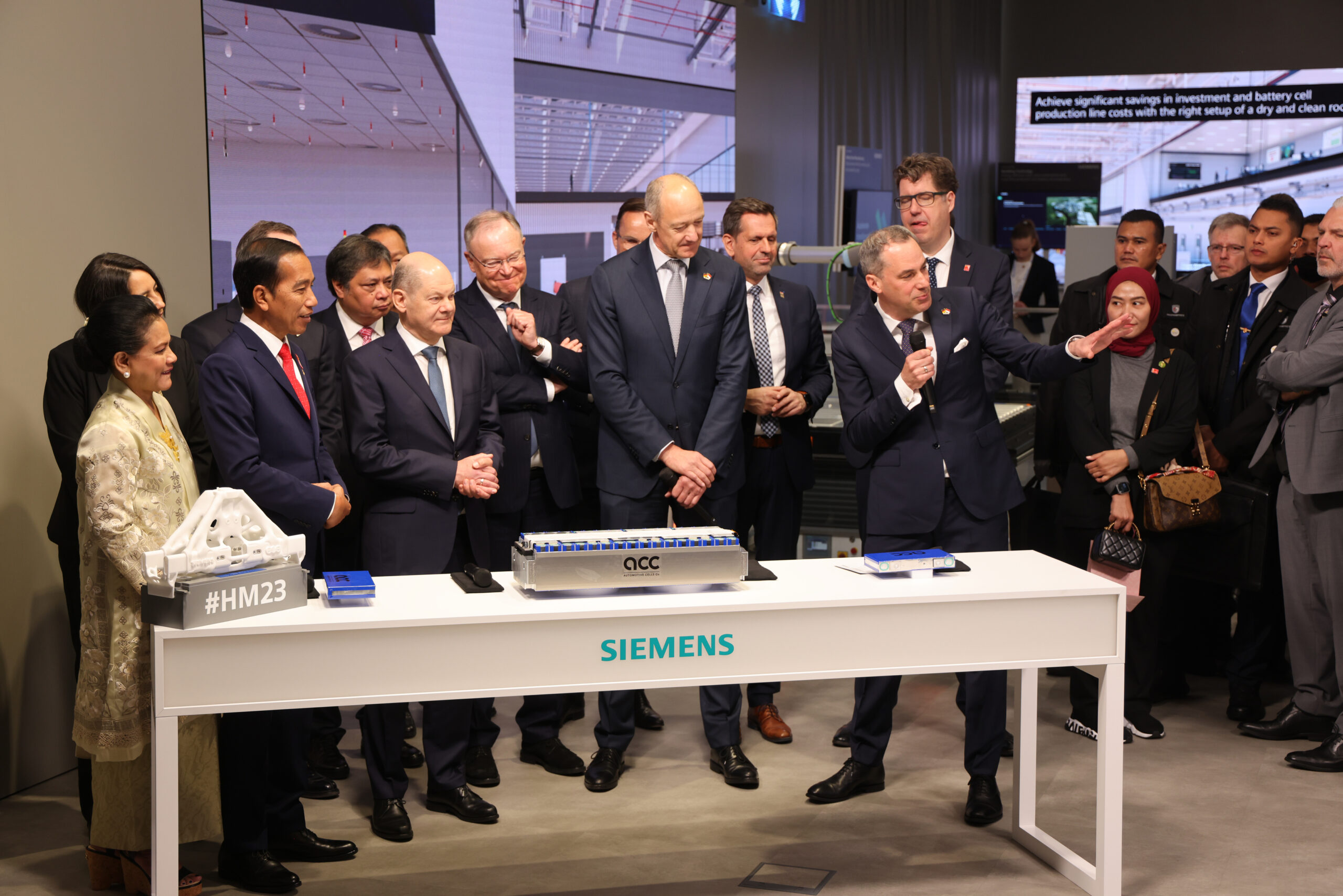Creating sustainable electrification in the battery industry

I had the chance recently to sit down with Eryn Devola, our Head of Sustainability at Siemens Digital Industries, to talk about the one of the major growth industries right now – batteries. The electrification potential they bring could be invaluable as companies design, create, deploy, and recycle more sustainable products. For an in-depth discussion of the industry and our goals to support each of the players The Battery Podcast is a great resource. But for a higher-level discussion and a focus on sustainability, I’ve collected some of the answers Eryn had for me encapsulating her thoughts on the industry.
Nick: Batteries were highlighted at Hannover Messe ’23 as the through line story for all the software, products, and services Siemens provide. Was there anything in particular that you thought was exciting to see on the show floor?
Eryn: I think for me the most exciting piece is being able to see it all together and see it as an end-to-end journey. From the beginning, looking at how do I design a better battery? How do I manufacture a better battery? And how do I have a good plan for what I’m going to do with that battery at the end of its life? The battery industry has traditionally had very bad throughput coming out of their factories, it’s had relatively poor performance, and limited planning for end-of-life. And so being able to see those pieces come together for me was really the really exciting piece of it. It’s the idea that I know what’s going to happen end-to-end, and I’ve made a plan for it, and that we’re able to help solve those traditional problems that the battery industry has been facing.
Nick: I’ve also been talking in parallel with some of the folks from the battery industry group here at Siemens, but I’m curious, what are your thoughts on how we need to grow in that sector? Is there an application that you’re seeing as foundational for the next few years to really push on global sustainability?
Eryn: I think the biggest thing we need to continue to look at is, how are we storing energy along grids? How are we making sure we have the infrastructure to really transition to an electrified transportation market from a fossil fuel system? We just had dinner at a conference this week, and someone was talking about establishing good coverage for mobility infrastructure in the U.S. but also in Europe. I think that is a big part of the discussion. I think we need to be continuing to look to some of our other colleagues at Siemens who are helping with that mobility infrastructure.
Nick: The impact of battery electrification is solely from greenhouse gases, like many of the sustainable transitions we seek globally. How are we thinking about these other parts of sustainability today, like water use, factory effluence, and the work and labor force?
Eryn: In overall environmental impacts, I think we are maturing quickly. There is legislation in the EU driven toward the corporate sustainability reporting directive, or CSRD, that requires disclosure by fiscal year 2025 on many of these areas. The other thing that you’re seeing is really trying to get a better understanding of how batteries impact this, especially looking at end-of-life, and how we recover these precious limited resources that we use so much of in batteries. How do we ensure that they don’t have one life, but they have significantly more? I think those are the really important questions that we look at for the industry. Another thing we look at is the labor force, we’re seeing manufacturing move to areas where we haven’t seen it move in a long time. We see new factories coming up in the United States, in Germany, across a lot of Europe, and I think that that’s a really great for some geographic workforce diversity coming through in these technical factory jobs.
Nick: If there is one thing you could make sure people take away on the battery industry in regard to sustainability, what would it be?
Eryn: I would say that this is a booming industry that needs to scale quickly, and that while we’re doing that with a ton of speed and investment, but not ignore the environmental impacts, and the overall quality and efficiency coming out of these new factories. And the digital tools that we have at Siemens are really the places that we’re able to make a big impact, and to really help this industry leapfrog in its performance.
And that capacity only comes if you both do it quickly, do it smartly, and then really get… I often say this, “get all the juice out of the fruit,” or if we still have poor factory fallout, or premature failure of the battery, we’re not addressing the capacity problem the way we should.
To learn more Siemens solutions for the battery industry, please check out our page on the subject or listen in to new episodes of The Battery Podcast as they air. And for more general information on what Siemens is doing to help our customers become sustainable you can check out resources here.
Siemens Digital Industries Software helps organizations of all sizes digitally transform using software, hardware and services from the Siemens Xcelerator business platform. Siemens’ software and the comprehensive digital twin enable companies to optimize their design, engineering and manufacturing processes to turn today’s ideas into the sustainable products of the future. From chips to entire systems, from product to process, across all industries. Siemens Digital Industries Software – Accelerating transformation.
For more information on Siemens Digital Industries Software products and services, follow us on LinkedIn, Twitter, Facebook and Instagram.


